Get started
Watch a demonstration of this experiment and download the technician notes from the Education in Chemistry website: rsc.li/3YGZeLP
We often introduce learners to concepts through different lenses. Staple demonstrations of key kinetic theory concepts, like diffusion and convection, can be well known. This means that some students may have already seen the demonstration you had in mind, whereas other students might be approaching a concept for the first time. This is why I like to have a few extension ideas prepared.
One of my favourites is to take the classic convection demonstration – dropping a crystal of potassium manganate(VII) into a large beaker or convection tube before heating from beneath – and turn it around by creating a cold cube that floats on the surface and sets the currents flowing in the opposite direction. With even more time available and the assistance of a couple of kitchen ingredients, it is possible to show students the beautiful patterns that form when convection currents combine in 3D.
Use this demonstration when teaching concentration gradients, diffusion and convection at 11–16.
Kit
- 0.02 M potassium manganate(VII) solution frozen into ice cubes
- Large beaker (>400 cm3)
- Coffee liqueur (such as Tia Maria or see tips)
- Petri dish
- 100 cm3 beaker
- Single cream
- Pasteur pipette
- Visualiser
Health, safety and disposal
- Wear eye protection.
- Do not eat or drink in the lab.
- CLEAPSS does not currently classify <0.1 M potassium manganate(VII) solution as hazardous. Take care to avoid skin contact and wear gloves when preparing potassium manganate(VII) solution as it stains skin though. CLEAPSS members can read RB073 to prepare potassium manganate(VII) solutions.
- If making a model liqueur solution, note that school ethanol is likely to be industrial denatured alcohol, which is flammable, harmful if swallowed and may cause damage to organs.
Health, safety and disposal
- Wear eye protection.
- Do not eat or drink in the lab.
- CLEAPSS does not currently classify <0.1 M potassium manganate(VII) solution as hazardous. Take care to avoid skin contact and wear gloves when preparing potassium manganate(VII) solution as it stains skin though. CLEAPSS members can read RB073 to prepare potassium manganate(VII) solutions (bit.ly/4idcssH).
- If making a model ‘liqueur’ solution, note that school ‘ethanol’ is likely to be industrial denatured alcohol (IDA), which is flammable, harmful if swallowed and may cause damage to organs.
Preparation
Freeze a few cubes of 0.02 M potassium manganate(VII) solution in advance.
In front of the class
I tend to start with the classic demonstration – commonly I do this by using forceps to drop a large crystal of potassium manganate(VII) through a glass tube to the base of a beaker and then heating below the crystal. I then support students in building an explanation by using the particle model before showing them an ice cube made from the purple liquid and asking them to explain what would happen when I place the cube in the water. This time the cube floats at the surface of the water and the water around it begins to sink, pulling tendrils of melting purple solution along with it and initiating a convection current in the opposite direction to that of the original demonstration.
Watch Sweet rainbow science from 01:12 to 01:51 to see the classic potassium manganate(VII) demonstration in action. Use the colourful experiment alongside this convection demo when teaching diffusion, density and the particle model.
A final trick is to set up a visualiser over a Petri dish. Half-fill the Petri dish base with coffee liqueur, then carefully layer some single cream over the top so that the cream floats in several rafts. Aim for about 90% coverage of the surface. Where these rafts meet, small cells will form in the gaps between them. With the assistance of a visualiser, you can clearly see tumbling bundles of cream driven by rapid convective flow.
Tips
Obtaining larger crystals of potassium manganate(VII) for use in this demonstration can be challenging. A technician tip is to use a small ball of plasticene (1–2 millimetres) to pick up a couple of smaller crystals of potassium manganate(VII) before dropping it into the beaker.
Thinner layers of cream make more intricate patterns with interconnected cells that form, coalesce and collapse. Thicker cream layers make single, more stable cells. A thick layer of cream may completely cover the liqueur, so you may need to poke a hole through with a splint to form the convection cell.
In theory, you don’t need to buy a specific coffee liqueur. You can make a model solution by dissolving ethanol in water to make a 20% solution. However, the liqueur also has some sugar in it. A simple mock-up of a 20% ethanol mixture with some food colouring leads to the density being too low to support the cream on top. Tia Maria, which I used in the video, has about 33 grams of sugar per 100 millilitres of alcohol.
Teaching goal
These demonstrations show how changes in density can lead to the bulk motion of solution and provide opportunities for students to build explanations that involve the relative motion of particles as a material changes temperature. The classic convection demonstration shows the initial movement upwards initiated by heating from below, but the ice cube variation has an initial movement downwards driven by cooling of the surrounding solution.
Interestingly, the liqueur variation starts with a sideways movement and is an example of solutal convection. This curious effect arises from a combination of several factors associated with particles: diffusion, surface tension and density.
The liqueur is primarily a solution of sugar and ethanol in water. You can think of the cream as a colloid of fats and proteins in water. Surface tension arises from the forces acting between the particles in the liquid and the latter has a higher surface tension. You can see this by using a Pasteur pipette to create a droplet of the liqueur and a droplet of the cream next to one another in the lid of the Petri dish. The liqueur will wet the plastic to some extent, whereas the cream remains tightly bound in a droplet.
At the edges of the rafts of cream in the dish, the surface will pull away from the lower tension liqueur mixture around them. The liquid subducts and, in the centre of the cells, fresh liqueur comes to the surface where buoyancy effects further assist it due to the slightly lower density of ethanol-rich regions of the liquid away from the cream. The overall process is known as Bénard–Marangoni convection.
At the edges of the rafts of cream in the dish, the surface will pull away from the lower tension liqueur mixture around them. The liquid subducts and, in the centre of the cells, fresh liqueur comes to the surface where buoyancy effects further assist it due to the slightly lower density of ethanol-rich regions of the liquid away from the cream. The overall process is known as Bénard–Marangoni convection.
Declan Fleming
Downloads
Curious convection technician notes
Handout | PDF, Size 0.13 mbCurious convection technician notes
Editable handout | Word, Size 0.45 mb
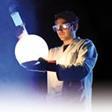



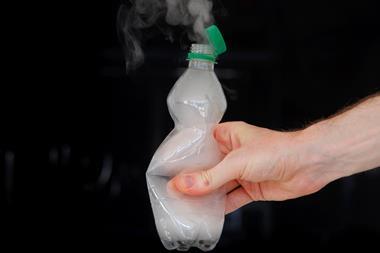
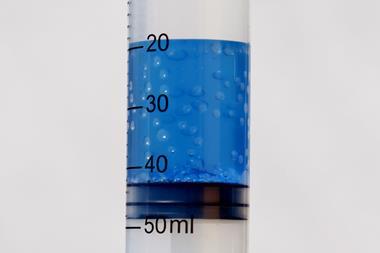
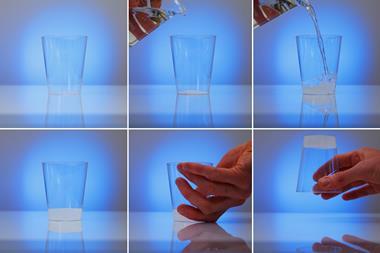

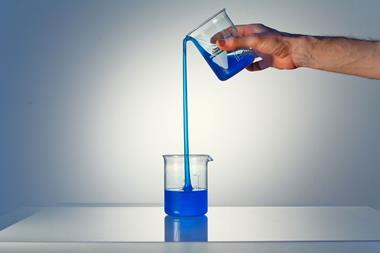

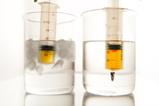
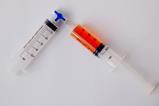




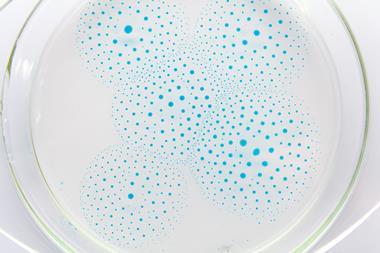






No comments yet